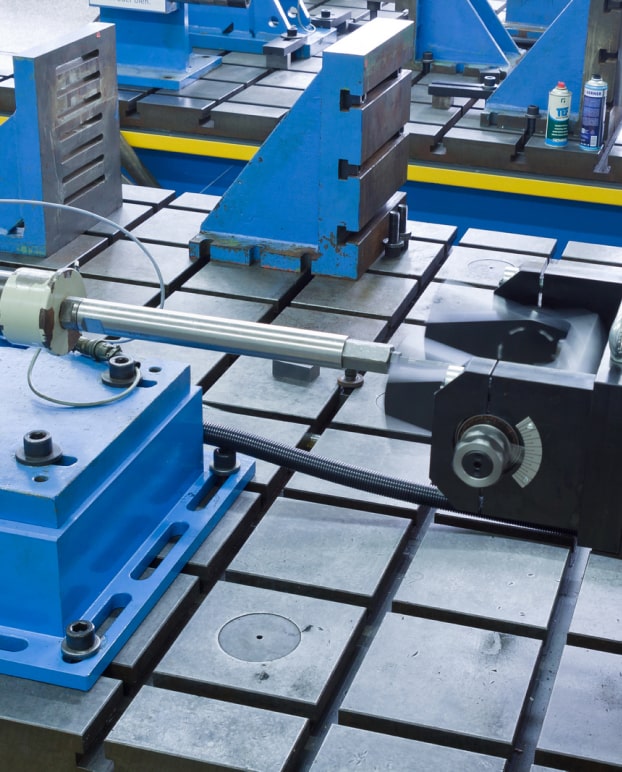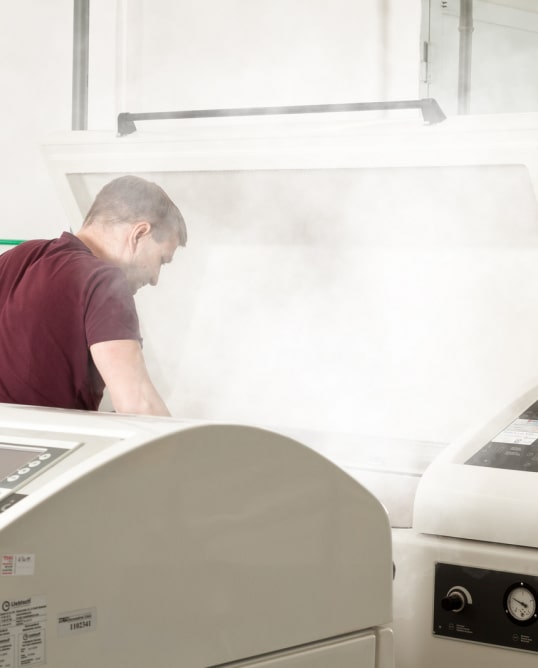Testing lab
Measuring the functional
properties of joints
We subject our products to various tests according to automotive standards and our customers’ requirements. Our laboratory (popularly known as the “test room”) is part of THK Rhythm’s global testing capability.
In this part of the laboratory, the functional properties of joints are verified. Parts are measured during testing, prototypes are verified and parts from series production are also tested. The joints must be sufficiently stiff (no play) and easy to move (no resistance). The functional properties must remain within the specified limits even after passing a lifetime wear test. Destruction tests are also carried out.

Dynamic testing
According to the requirements of the product, fatigue resistance tests are performed by cyclic loading. Both individual components (e.g. the pin itself) and entire assemblies are tested. The test usually runs until the part breaks. The tests are carried out on hydraulic cylinders in the range of 10 – 250 kN.
Lifetime tests
We use unique 3-axis testing machines that simulate the loading of a part as it occurs directly on the car chassis. This makes it possible to simulate driving on a test circuit, including changes in external temperature and humidity conditions. These tests do not destroy the part, but they do monitor changes in the functional properties of the joints.
Lifetime of rubber cuffs
Test machines of this type simulate the effect of the environment on the service life of the rubber cuffs covering the joint. The pins are moved during the test, exposing the parts to the adverse effects of temperature, water, salt, dust and other conditions. The condition of the cuffs and the penetration of moisture into the joint are then evaluated.
Corrosion tests
The quality and quality of the surface treatment of individual components is verified in corrosion chambers by a series of tests.
